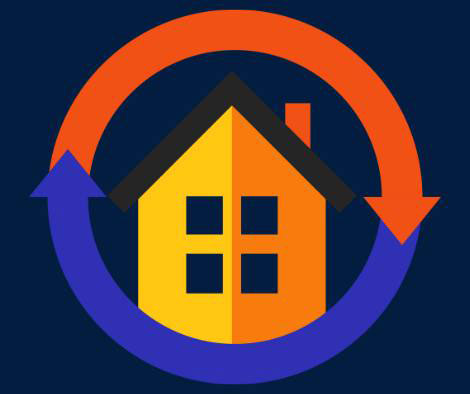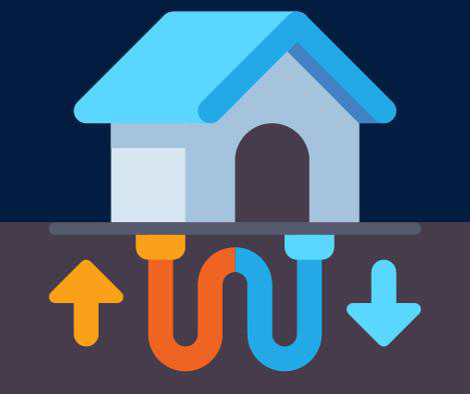
Posted: January 16, 2024 at 7:40 am
By: Lakes Region HVAC
Whether you are looking to integrate heat pump technology into your home or business or you have already done so, understanding how these systems work is essential. By familiarizing yourself with how heat pumps operate, you not only make informed decisions about their application in your home but also optimize their maintenance and care. Regardless of your circumstance, be it a curious newcomer or an experienced user, understanding the intricacies of heat pumps technology will improve your confidence in ensuring the comfort of your home is exactly where you want it to be. And heat pump technology can be a lot more interesting than you might think!
Heat pumps tend to be one of the most misunderstood type of heating and cooling systems on the market. While they're becoming more well-known for their efficiency, versatility, and safety, there are still some misconceptions out there. The first common misconception about heat pumps is that they are a new technology. This rumor couldn't be more wrong! The first heat pump was made in 1856, and the technology has been steadily evolving ever since. While the components and processes have vastly improved, the concept has remained the same.
The second common misconception about heat pumps is that they can't be used in colder climates. However, heat pumps work in any climate. New variations of refrigerant, particularly R-10A, have allowed heat pump systems to operate efficiently even in the traditionally colder regions like New England. The key word here is "efficiently." All heat pumps are able to operate in cold climates; however, the older versions operate slightly less efficiently. Some New Hampshire homeowners find it cost-effective to use a dual fuel system. When temperatures drop too low for the heat pump to work at the most effective level, the system switches to a high-efficiency furnace to generate heat. The most cost-optimal switchover temperature depends on the backup system’s heating fuel. A dual system is not always necessary however, and frequently a heat pump can handle all of a home’s heating needs.
Another important factor is sizing. Heat pumps, like all HVAC systems, must be sized to the building. If the system is too small, energy bills will skyrocket, and the temperature of the space won't be warm enough in the winter. This is one reason, among many others, to vet your HVAC company to ensure their technicians are certified and factory-trained. An HVAC professional can give options and suggestions of which heating system would work best for your home or space. If a heat pump is the solutions, they work with ducted and ductless buildings, can be zoned for big or small homes or businesses, and are affordable to maintain on any budget.
Heat pumps are an incredible asset to home and business owners while simultaneously preventing further ecological damage to our planet. For some, heat pump technology might sound dull, but we can assure you that the science behind it can be both easily understood and fascinating.

Most heat production works simply in that the energy put in via wood, coal, oil, gas, or electricity is what is put out in the form of heat. In theory, this would be 100% efficiency; however, in practice, energy (and therefore heat) is lost during the process. For this explanation, let's imagine it's possible to have a furnace operating at 100% efficiency, and you're using it to warm up a room. That sounds like a perfect score and the peak of efficiency, right? What's higher than 100%? Well, heat pump technology does something truly incredible. With the exact same amount of energy that the funrace uses, a heat pump can produce three to four times more heat in a room. A heat pump can do this by using electricity to gather heat instead of produce it.
If there's anything magical about a heat pump, it's not the heat pump itself but the refrigerant. This incredibly unique compound is what allows the heat pump to absorb heat to bring it into a home or business. Refrigerant is able to do this because of its low boiling and freezing points. For most people south of Canada, -15° Fahrenheit is a brutally cold day, but that's the boiling point of a refrigerant, and it's entirely impossible for a refrigerant to freeze in a natural environment. For perspective, the boiling point of water is 212° Fahrenheit, and its freezing point is 47 degrees higher (32° Fahrenheit) than a refrigerant's boiling point. All of this to say, a refrigerant is truly special; without these characteristics, the refrigeration cycle would be impossible.
The refrigeration cycle is the process of moving heat from one location to another. The mechanisms within a heat pump change the state of the refrigerant between liquid and gas to help it gather and release heat. The process can be broken down into four phases.

The incredible thing about the heat pump process is that it can be done in reverse! When cooling, the heat pump absorbs the heat from indoors to allow cool air to be pumped back into the space.
We highly recommend you contact a trained HVAC professional to evaluate your home and current heating system to get a good idea of what a heat pump can offer you.
If this article is useful to you, or if you know someone who can benefit from it, please Share it.
Have another question? Contact the Lakes Region team, and we’ll find your solution.
Our clients are homeowners, small business owners, and corporations—and one could be you by calling 603-286-2290 or emailing info@lrhvac.com.
Lakes Region’s expert service technicians and installers are trained in the latest advancements in heating and cooling technologies. We'll help you select the correct comfort system for your home, ensuring that your equipment operates at the highest efficiency — giving you the lowest monthly operating cost.
Visit our website.
LRHVAC’s office hours: Monday - Friday
7:30-4:30
Phone: 603-286-2290
Mail: 86 Bay Hill Rd., Northfield, NH 03276
Email:
Email us